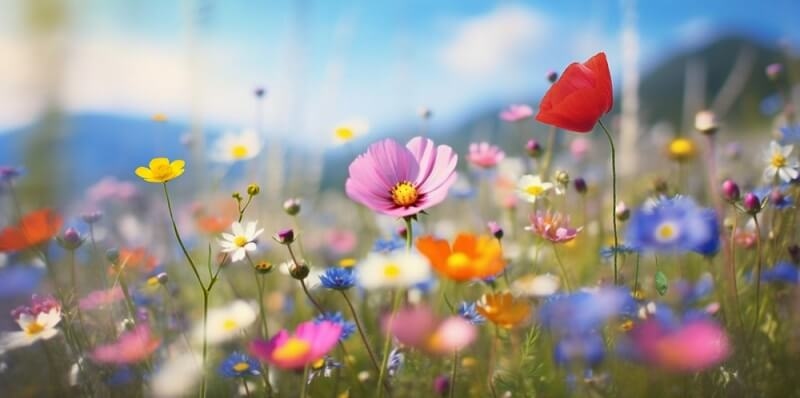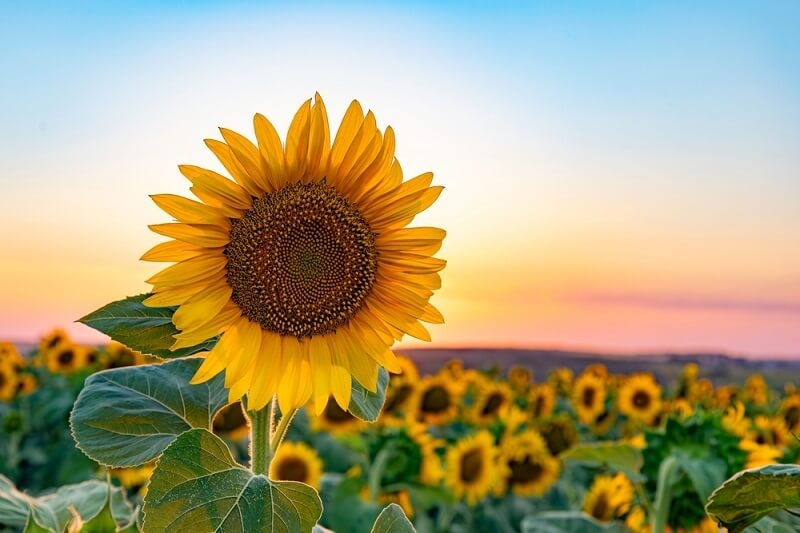
Flowers are always beautiful. Whether placed in your home, for festivities, or given as gifts, flowers fit well into cultures and times of the year. Seasonal flowers are attractive not just for their looks, but, in part, for being tied into the seasons and the natural world. Selecting flowers based on their season results in choosing flowers that last longer, cost less, and are connected to the season's sentiments. This article will explain seasonal flowers by month, provide ideas for gifting spring flowers, suggest winter flower arrangements, showcase summer floral bouquets, and guide fall seasonal blooms so you can bloom beautifully all year.
Seasonal flowers have multiple reasons to choose seasonal:
From cheerful daffodils sweetening spring days, to the beautiful winter arrangements tied to holiday celebrations, using the season's flowers in planters and arrangements creates the magic of fresh blooms.
Here’s a reachable seasonal breakdown to manually make your picks:
This list simplifies plotting weddings, events, or non-public bouquets with the right seasonal touch.
Spring marks a time of renewal, freshness, and birthday parties. With lively, beautiful blooms, nature begins to awaken, and it is the best time to give the gift of plants. Spring plants often represent preference, love, and pleasure.
Including sparkling blooms like those that are no longer most effective creates lovely preparations and adds thoughtfulness and sentiment to your gesture.

The warmth of summer brings out the brightness and fullness of life in flowers. Because flowers flourish under the sun, summer bouquet ideas will be bold, shiny, and full of personality.
Summer bouquets should be colorful, playful, and intended to embody the excitement of long, sunny days.
With the arrival of the fall season comes warmth and coziness in its vegetation as beautifully as in its underwriting. The fall seasonal blooms guide an idea of rich colors such as burnt orange, deep purple, and golden yellow. These plant life align flawlessly with harvest galas, Thanksgiving, and seasonal décor.
This fall seasonal blooms guide shows how nature’s palette can bring comfort and character to every event.
The winter season often calls for an air of elegance and sophistication in floral design. Although the selection of flowers may be lower with the change in the seasons, winter flower arrangements can remain simply stunning, especially if they incorporate themes of the season.
Winter flower arrangements are suitable for holiday gatherings, anniversaries, and invitations for indoor get-togethers in the warmth.
Seasonal flower displays add magic to any occasion, such as weddings, birthdays, or holidays. In the spring, the arrangements will be full of pastel shades; in the summer, flowers will reflect their summer colors; in the fall, the arrangements will reflect warm autumn hues; and in winter, they will reflect beauty with whites and evergreens. Each time you select seasonal flowers, you receive freshness and beauty while allowing for a personal connection to the occasion.
Moreover, seasonal flowers used for decorations at weddings, corporate events, and regular events will raise the spirits of the environment.
Seasonal flora offer flexibility, even by ensuring splendor and symbolism that lasts through each 2d.
By following these steps, you’ll generally choose out seasonal plant life that suits your motive perfectly.
Keeping flora clean calls for critical but straightforward steps:
If you care correctly for seasonal flowers, they will remain beautiful for as long as possible.
Seasonal flowers have significant meaning at different times of the year. In Spring, tulips symbolize renewal; in Summer, roses symbolize love; in Fall, chrysanthemums symbolize strength; and in Winter, lilies symbolize purity. Choosing seasonal vegetation lets you create arrangements that transcend beauty, supplying considerate gestures rooted in cultural and emotional significance.
Flowers often deliver a symbolic meaning related to their season:
Using seasonal flowers based on symbolism adds value and intention to your floral choices.
Choosing the perfect seasonal plant life is more than colour and splendor—it celebrates each season’s precise charm. Whether brightening a room with spring blossoms, crafting cozy iciness arrangements, or gifting vibrant summer and fall bouquets, seasonal blooms deliver freshness and pleasure 12 months-spherical.
Following this seasonal plant life guide, you can make thoughtful alternatives that enhance the occasion and season flawlessly. From easy home décor to big gadgets, seasonal plant life adds a touch of nature’s rhythm to your lifestyle, assisting you in staying connected with the splendor that blossoms every season.
This content was created by AI